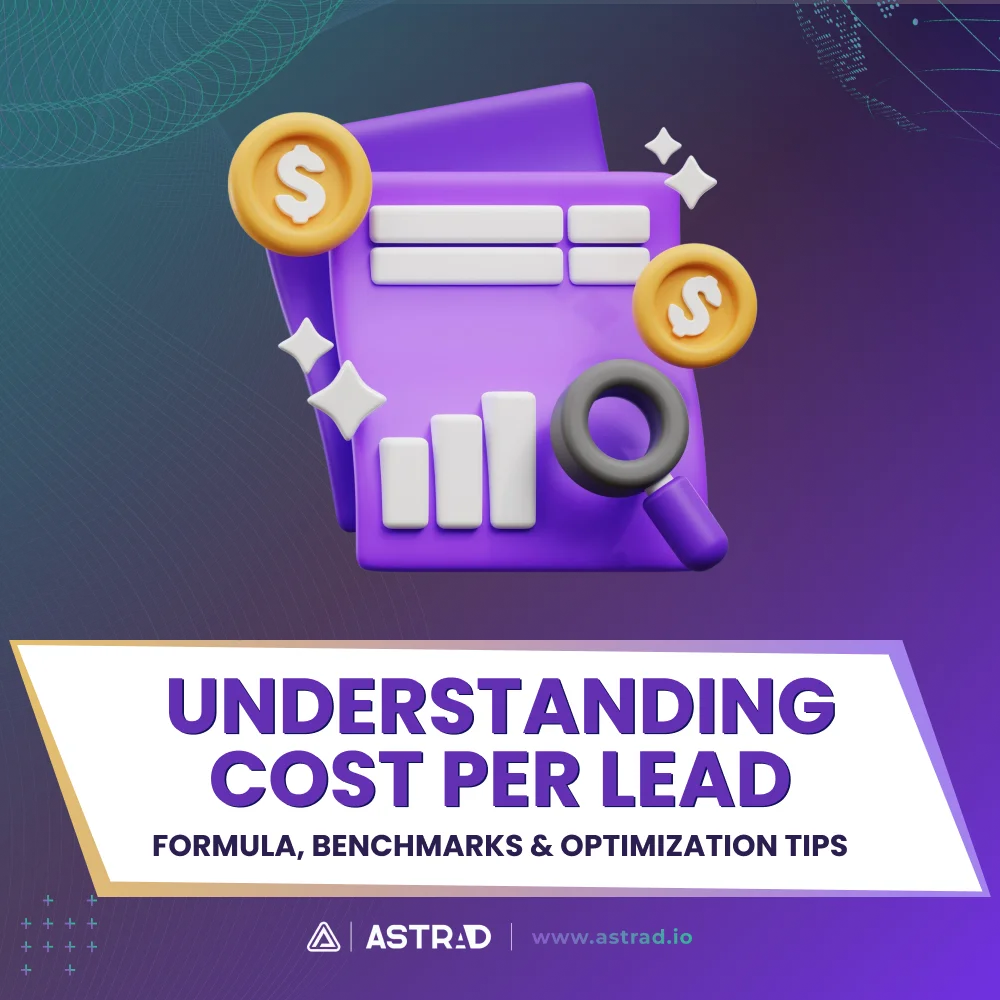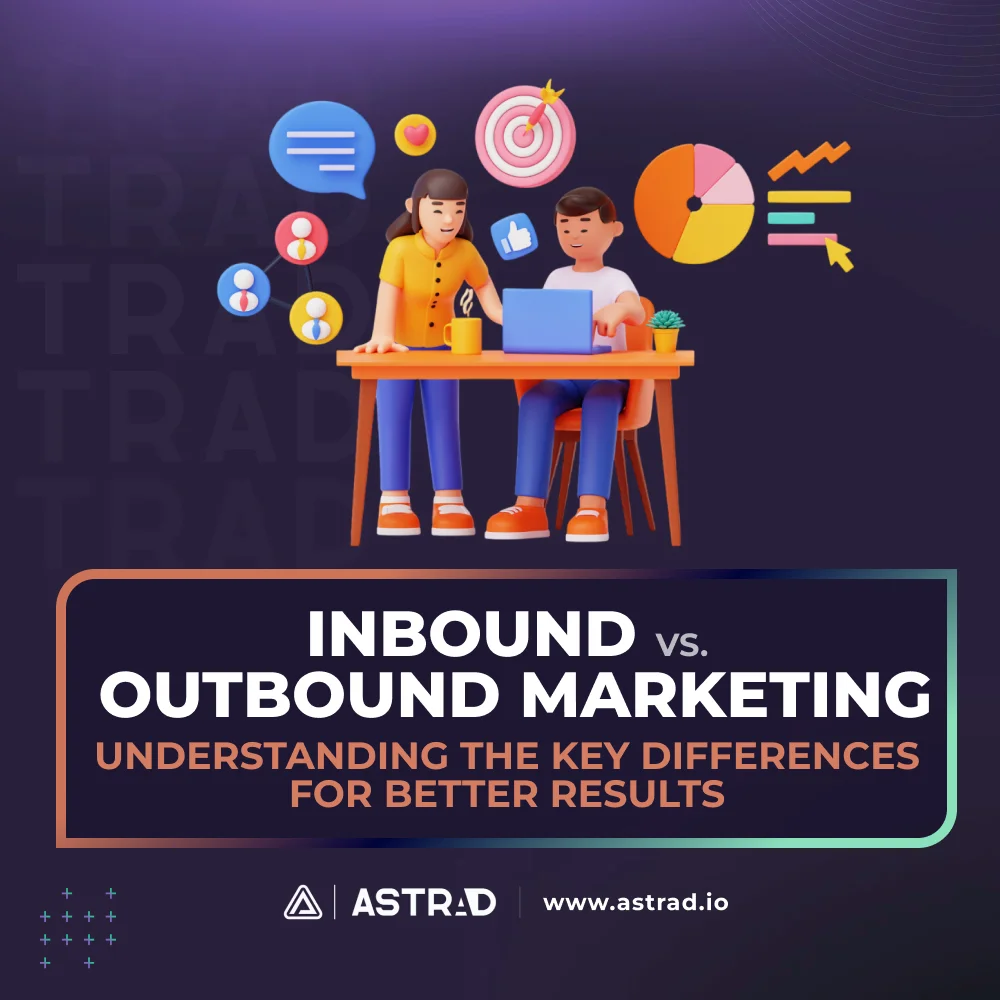“Half the money I spend on advertising is wasted; the trouble is I don’t know which half.” This century-old quote from John Wanamaker still haunts marketers today. But in our digital hellscape—I mean landscape—we’ve got something old John never had: metrics. And when it comes to evaluating your marketing spend, cost per lead stands tall as the North Star guiding smart marketers away from money pits and toward profitable shores.
In the relentless pursuit of growth, businesses often throw cash at lead generation like confetti at a parade. But without tracking cost per lead, you’re essentially navigating with a broken compass. According to HubSpot, companies that calculate and optimize their cost per lead consistently outperform competitors by 38%. That’s the difference between dominating your market and becoming another casualty in the digital battlefield.
Let’s break down what cost per lead really means, how to calculate it properly, and most importantly, actionable strategies to slash those costs while maintaining—or even improving—lead quality.
What Is Cost Per Lead and Why Should You Care?
Cost per lead (CPL) is exactly what it sounds like: the amount of money you spend to acquire a single lead. Simple in concept, powerful in practice. It’s the metric that tells you whether your marketing machine is a finely tuned engine or a money-guzzling monster.
Think of CPL as your marketing efficiency scorecard. High CPL means you’re spending too much for too little; optimal CPL suggests your marketing dollars are working overtime. For growth-focused businesses, tracking cost per lead isn’t just good practice—it’s survival.
When you know your cost per lead, you gain the superpower of informed decision-making. You can double down on channels that deliver affordable leads, cut bait on expensive platforms that drain resources, and allocate your precious marketing budget with surgical precision. Without this metric, you’re just throwing darts in the dark and hoping for bullseyes.
Understanding the Cost Per Lead Formula
Before you can optimize something, you need to measure it correctly. The cost per lead formula is refreshingly straightforward, but don’t let its simplicity fool you—it’s a powerful tool in your marketing arsenal.
Cost Per Lead Formula Explained
The basic cost per lead formula looks like this:
CPL = Total Marketing Spend / Total Number of Leads Acquired
Let’s break down each component:
- Total Marketing Spend includes everything you invest to generate leads: advertising costs, content creation expenses, software subscriptions, agency fees, and even the relevant portion of your marketing team’s salaries. Be thorough here—overlooking costs leads to an artificially low CPL that can misguide your strategy.
- Total Number of Leads Acquired represents all the leads generated during the same period as your marketing spend. This includes form submissions, email sign-ups, phone inquiries, chat conversations—any potential customer who’s raised their hand to express interest.
Example Calculation: How to Calculate Cost Per Lead in Action
Let’s say your SaaS company ran a campaign last month with the following expenses:
- Google Ads: $5,000
- LinkedIn Advertising: $3,000
- Content Creation: $1,500
- Marketing Automation Platform: $500
Your total marketing spend comes to $10,000. During this period, you generated 250 leads. Plugging these numbers into the formula:
CPL = $10,000 / 250 = $40 per lead
This means each lead costs you $40 on average. But is that good or terrible? The answer depends on your industry, customer lifetime value, and conversion rates—which we’ll explore shortly.
How to Calculate Cost Per Lead: A Step-by-Step Guide
Calculating your cost per lead isn’t rocket science, but it does require methodical tracking and analysis. Here’s how to do it right:
Step 1: Track All Marketing Expenses
Start by documenting every dollar spent on lead generation efforts. This includes:
- Paid advertising (search, social, display)
- Content marketing costs
- Email marketing expenses
- Event marketing
- SEO investments
- Agency or consultant fees
- Relevant software subscriptions
Be meticulous here—partial tracking leads to misleading results. Many companies use dedicated marketing analytics platforms to automate this process and ensure accuracy.
Step 2: Count Your Leads Accurately
Identify all leads generated during the same period as your marketing spend. Make sure to:
- Set clear definitions for what constitutes a “lead” for your business
- Track leads across all channels and touchpoints
- Distinguish between marketing qualified leads (MQLs) and sales qualified leads (SQLs) if needed
- Use proper UTM parameters and tracking to attribute leads to their sources
If you’re using a CRM, this data should be readily available. If not, now’s the time to implement proper tracking.
Step 3: Apply the Formula and Analyze
Once you have both numbers, calculate the cost per lead using the formula we’ve already covered. But don’t stop there—segment your data to uncover deeper insights:
- Calculate CPL by channel (social, search, email, etc.)
- Track CPL trends over time
- Compare CPL for different campaigns or messaging approaches
- Analyze CPL by product line or service offering
This segmented analysis reveals where your marketing dollars work hardest and where they’re being squandered.
Benchmarks: What Is a Good Cost Per Lead?
The million-dollar question: “Is my cost per lead good or bad?” The frustrating but honest answer is: it depends. Let’s break down what “good” looks like across different scenarios.
Industry Benchmarks for CPL
Cost per lead varies dramatically by industry. Here’s a snapshot of typical ranges based on recent market data
- B2B Services: $35-150 per lead
- SaaS: $50-500 per lead
- Healthcare: $60-300 per lead
- Financial Services: $50-250 per lead
- eCommerce: $10-45 per lead
- Real Estate: $20-80 per lead
These ranges are wide because they encompass businesses of different sizes, regions, and target markets. Use them as rough guidelines, not gospel.
What Determines a "Good" CPL for Your Business
Rather than obsessing over industry averages, define what “good” means specifically for your business. This requires looking at:
- Customer Lifetime Value (CLV): If your average customer brings in $10,000 over their lifetime, you can afford a higher CPL than a business with a $500 CLV.
- Lead-to-Customer Conversion Rate: If 25% of your leads become customers, you can tolerate a higher CPL than if only 5% convert.
- Profit Margins: Businesses with higher margins can sustain higher acquisition costs.
The magic formula: If your CLV is significantly higher than your Customer Acquisition Cost (which includes CPL), you’re in good shape. A common rule of thumb suggests aiming for a CLV at least 3x your acquisition cost.
Factors Influencing Cost Per Lead
Understanding what drives your cost per lead gives you the power to control it. Let’s examine the key factors at play.
Marketing Channels Matter
Different channels deliver vastly different CPLs:
- Organic Search: Often delivers the lowest CPL but requires patience and consistent investment
- Email Marketing: Typically offers excellent CPL for nurturing campaigns
- Paid Social: Costs vary wildly depending on targeting precision and platform
- Google Ads: Usually higher CPL but often delivers high-intent leads
- Traditional Media: Generally highest CPL but may reach otherwise inaccessible audiences
The trick isn’t necessarily choosing the cheapest channel, but finding the optimal mix that delivers quality leads at a sustainable cost.
Lead Quality vs. Quantity: The Eternal Tradeoff
Not all leads are created equal. A low cost per lead means nothing if those leads never convert. Many marketers fall into the trap of optimizing for CPL without considering quality, resulting in impressive metrics but disappointing sales.
High-intent leads—those actively searching for solutions like yours—typically cost more but convert better. Low-intent leads might be cheaper to acquire but require more nurturing and have lower conversion rates.
The solution? Track not just CPL, but cost per qualified lead or even cost per acquisition to get the full picture.
Geography and Demographics: Location, Location, Location
Where your leads live dramatically impacts your CPL. Targeting prospects in major metropolitan areas or wealthy suburbs? Expect to pay premium prices. Going after rural markets or developing economies? Your CPL might be significantly lower.
Similarly, demographic factors like age, income level, and education affect how expensive leads will be. The more competitive the demographic, the higher your costs.
How to Optimize Cost Per Lead
Now for the part you’ve been waiting for: actionable strategies to drive down your cost per lead without sacrificing quality.
1. Improve Lead Quality
Better targeting often leads to better CPL efficiency. Consider:
- Refining your ideal customer profile based on past conversion data
- Creating more specific audience segments for campaigns
- Using intent data to focus on prospects actively searching for solutions
- Implementing lead scoring to prioritize high-potential prospects
Remember: A slight increase in lead quality often justifies a slightly higher CPL because of improved downstream conversion rates.
2. Optimize Marketing Channels
After calculating cost per lead across channels, you can make data-driven decisions:
- Double down on channels with the lowest CPL and highest quality
- Test new channels with small budgets before scaling
- Adjust spending across channels based on performance
- Consider time-of-day and day-of-week optimization for paid campaigns
Don’t abandon channels immediately if CPL is high—test optimizations first, as high-cost channels sometimes deliver the most valuable customers.
3. Enhance Conversion Paths
Often, the fastest way to lower CPL is simply converting more of your existing traffic:
- A/B test landing pages to improve conversion rates
- Simplify lead forms (each unnecessary field reduces conversions)
- Add social proof and testimonials to build trust
- Implement exit-intent popups to capture abandoning visitors
- Use retargeting to bring back interested prospects
A 20% improvement in conversion rate instantly translates to a 20% reduction in CPL—often far easier than finding 20% more efficient ad spend.
4. Leverage Marketing Automation
Automation tools help reduce the manual costs associated with lead generation:
- Set up lead nurturing sequences to convert more prospects
- Implement chatbots for 24/7 lead capture
- Use dynamic content to personalize experiences without additional work
- Automate lead scoring and routing to sales
These investments typically pay for themselves through improved efficiency and higher conversion rates.
Mastering Cost Per Lead for Marketing Success
Cost per lead isn’t just another marketing metric—it’s the vital sign that indicates whether your lead generation efforts are thriving or on life support. By understanding how to calculate cost per lead accurately and implementing the optimization strategies we’ve covered, you can transform your marketing from a cost center into a predictable revenue engine.
Remember: The goal isn’t always to achieve the lowest possible CPL. The goal is to find the optimal balance between cost, volume, and quality that delivers the best return on investment for your unique business.
Start tracking your cost per lead today, benchmark it against your historical performance and industry standards, and then methodically test improvements. Your marketing budget—and your CEO—will thank you. In the endlessly chaotic world of digital marketing, your CPL is the compass that keeps you moving in the right direction.






